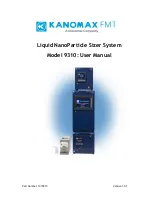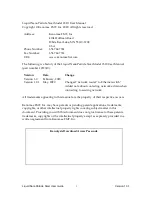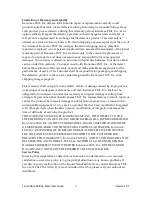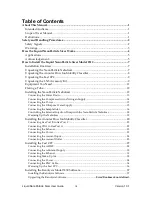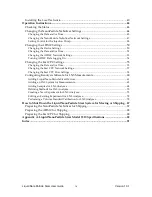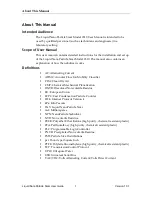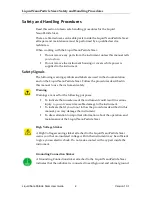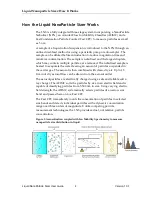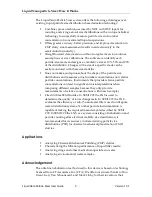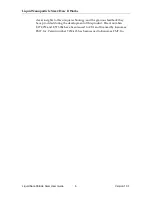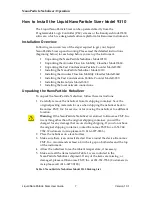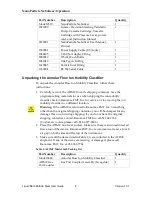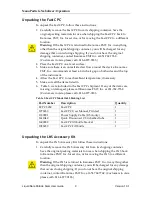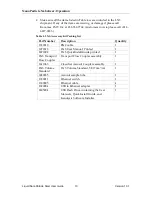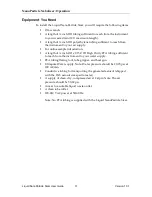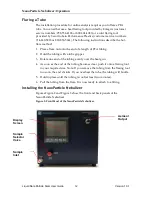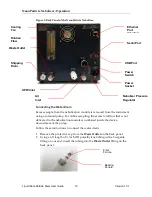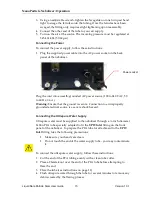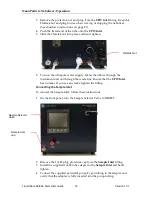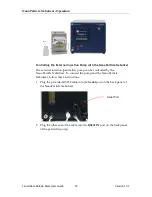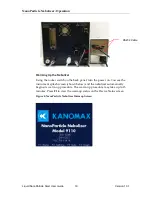
Liquid Nanoparticle Sizer: How It Works
Liquid NanoParticle Sizer User Guide
5
Version 1.0.1
The Liquid NanoParticle Sizer system offers the following advantages over
existing liquid particle size distribution characterization technology:
▪
Combines proven techniques (used by NIST and AIST, Japan) for
counting and sizing aerosol size distributions with a unique nebulizer
technology to successfully measure particle size and number
concentration in concentrated liquid suspensions.
▪
Offers greater accuracy, better precision, and improved resolution in
CMP slurry size-measurement results (used extensively in the
semiconductor industry).
▪
Straightforward data inversion without complex inversion routines,
assumptions or size calibrations. The software can identify each
particle-size mode and assigns a cumulative size at 10%, 50% and 90%
of the distribution. Changes in the size of a specific mode can be
easily monitored with these size statistics.
▪
Does not make assumptions about the shape of the particle size
distributions and measures actual number concentrations not relative
particle concentrations. (Instruments that provide relative particle
concentrations can lead to significant misinterpretations when
comparing different samples because they only provide
measurements of relative concentrations within each sample.)
▪
Cited in three SEMI Guides. In SEMI C92 the LNS is used to
determine the quality of ion exchange resin. In SEMI C79 the LNS
evaluates the efficiency of sub-15 nanometer filters used in ultrapure
water distribution systems. No other particle instrumentation is
capable of making the required measurements described by SEMI
C79. In SEMI C98 the LNS, as a system consisting of nebulization and
particle counting after electrical mobility size classification, is
recommended for its accuracy in characterizing particle size
distributions (PSD) for chemical mechanical planarization (CMP)
slurries.
Applications
▪
Analyzing Chemical-Mechanical Polishing (CMP) slurries.
▪
Characterizing the filtration performance of liquid filter media.
▪
Analyzing drugs and other medical nanoparticles in water.
▪
Analyzing environmental water samples.
Acknowledgement
The ultrafine nebulization method used in this device is based on technology
licensed from CT Associates, Inc. (CTA). We offer our sincere thanks to Don
Grant, Gary Van Schooneveld, and Mark Litchy for their invention, their

